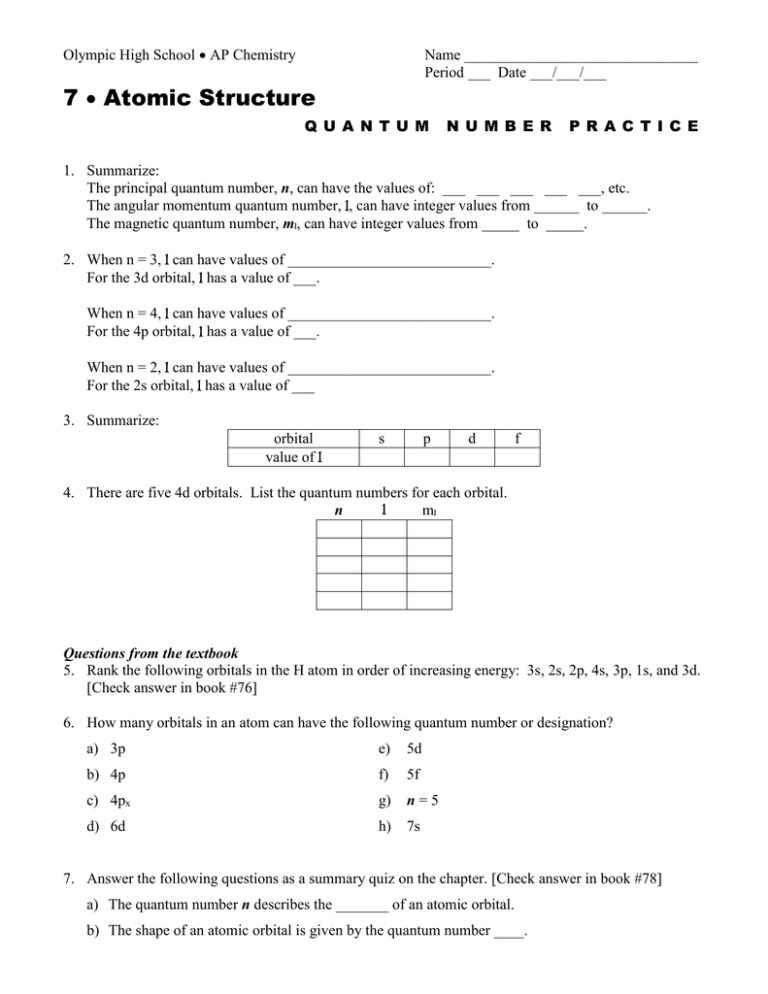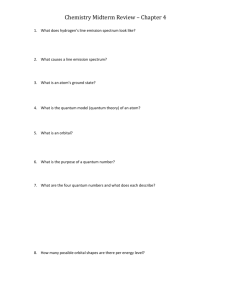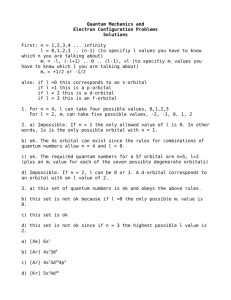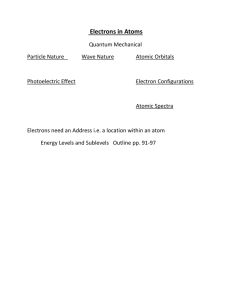7 Atomic Structure
advertisement

Olympic High School AP Chemistry Name _______________________________ Period ___ Date ___/___/___ 7 Atomic Structure Q U A N T U M N U M B E R P R A C T I C E 1. Summarize: The principal quantum number, n, can have the values of: ___ ___ ___ ___ ___, etc. The angular momentum quantum number, l, can have integer values from ______ to ______. The magnetic quantum number, ml, can have integer values from _____ to _____. 2. When n = 3, l can have values of ___________________________. For the 3d orbital, l has a value of ___. When n = 4, l can have values of ___________________________. For the 4p orbital, l has a value of ___. When n = 2, l can have values of ___________________________. For the 2s orbital, l has a value of ___ 3. Summarize: orbital value of l s p d f 4. There are five 4d orbitals. List the quantum numbers for each orbital. l n ml Questions from the textbook 5. Rank the following orbitals in the H atom in order of increasing energy: 3s, 2s, 2p, 4s, 3p, 1s, and 3d. [Check answer in book #76] 6. How many orbitals in an atom can have the following quantum number or designation? a) 3p e) 5d b) 4p f) 5f c) 4px g) n=5 d) 6d h) 7s 7. Answer the following questions as a summary quiz on the chapter. [Check answer in book #78] a) The quantum number n describes the _______ of an atomic orbital. b) The shape of an atomic orbital is given by the quantum number ____. c) A photon of orange light has _____ (less or more) energy than a photon of yellow light. d) The maximum number of orbitals that may be associated with the set of quantum numbers n=4 and l =3 is ____. e) The maximum number of orbitals that may be associated with the quantum number set n=3, l =2, and ml = -2 is ___. f) Label each of the orbital pictures found in question 78 (page 329)with the appropriate letter: g) When n=5, the possible values of l are ______. h) The maximum number of orbitals that can be assigned to the n=4 shell is ____. 8. Assume an electron is assigned to the 1s orbital in the H atom. Is the electron density (i.e. the probability of finding an electron) zero at a distance of 0.40 nm from the nucleus?___ (See A Closer Look: Atomic Orbitals)







